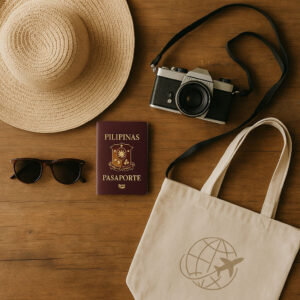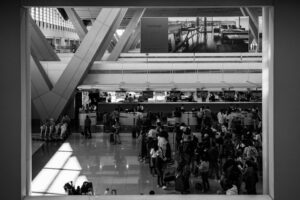 Every December, airports across the country turn into a lively swirl of OFWs coming home, balikbayans carrying giant boxes, and families rushing to make their flights. That’s exactly when having an updated Philippines travel advisory becomes essential. As someone who has stood in many long holiday queues with a packed backpack and a cup of lukewarm airport coffee, I’ve learned that the best gift you can give yourself is preparation. This guide brings together the latest reminders from PAL and Cebu Pacific, along with small lessons from my own holiday travels.
Every December, airports across the country turn into a lively swirl of OFWs coming home, balikbayans carrying giant boxes, and families rushing to make their flights. That’s exactly when having an updated Philippines travel advisory becomes essential. As someone who has stood in many long holiday queues with a packed backpack and a cup of lukewarm airport coffee, I’ve learned that the best gift you can give yourself is preparation. This guide brings together the latest reminders from PAL and Cebu Pacific, along with small lessons from my own holiday travels.
Understanding Airline Notices in the Philippines Travel Advisory
Airlines release seasonal guidelines to help passengers anticipate heavy traffic. Travelers should expect longer lines at check-in, stricter security inspections, and occasional schedule adjustments due to weather or runway congestion. In previous years, I’ve seen how a sudden evening downpour can back up departures for hours, so patience and preparation go a long way.
Peak Dates and Expected Delays
 PAL and Cebu Pacific identify the week before Christmas and the days right after New Year as peak travel periods. Terminals can overflow with passengers, making even simple steps like baggage drop feel like an adventure. I once waited nearly 40 minutes just to enter the departure hall in NAIA Terminal 3 — an experience that taught me to arrive earlier than usual.
PAL and Cebu Pacific identify the week before Christmas and the days right after New Year as peak travel periods. Terminals can overflow with passengers, making even simple steps like baggage drop feel like an adventure. I once waited nearly 40 minutes just to enter the departure hall in NAIA Terminal 3 — an experience that taught me to arrive earlier than usual.
To manage the holiday rush, airlines advise arriving at least three hours early for domestic flights and four hours early for international departures. A head start turns chaos into calm, especially when you’re following a reliable Philippines travel advisory during peak season.
Baggage Rules and Packing Reminders
Holiday notices always place heavy emphasis on baggage. PAL and Cebu Pacific remind passengers to pre-purchase baggage allowance, secure valuables in carry-ons, and follow the 100ml liquid rule for hand-carried items. I learned this personally when a jar of homemade bagoong was confiscated from my hand-carry one December — a reminder I never forgot. On this, make sure to read my article 10 Smart Packing Tips Every Traveler Should Know.
Oversized Items and Seasonal Gifts
Because many Filipinos travel with gifts, airlines have strict rules for oversized boxes, food products, and electronic devices. Balikbayan-style boxes must follow proper packaging standards, fragile items should be wrapped securely, and perishable goods must follow quarantine guidelines. Following these suggestions helps avoid unnecessary delays.
For practical packing habits, the Bakasyon.ph feature on affordable packing and travel strategies offers useful add-ons for travelers bringing extra bags.
Security and Safety Checks
 Airlines also remind passengers to be ready for intensified security procedures during peak season. Jackets, metallic accessories, and gadgets should be removed or placed separately before screening to help lines move faster. I keep my laptop and chargers in an easy-access compartment — a simple habit that has saved me countless minutes during rush season.
Airlines also remind passengers to be ready for intensified security procedures during peak season. Jackets, metallic accessories, and gadgets should be removed or placed separately before screening to help lines move faster. I keep my laptop and chargers in an easy-access compartment — a simple habit that has saved me countless minutes during rush season.
Weather Considerations
December brings unpredictable winds and scattered rain showers that can affect flight schedules. Staying updated through official airline announcements is essential, especially for provinces prone to holiday storms. When I once faced a three-hour delay on my way to Davao, checking real-time updates made the wait far easier.
For nationwide weather bulletins and seasonal advisories, the Department of Tourism’s travel updates are a reliable resource.
Practical Airport Habits for Holiday Travelers
Beyond airline notices, a few small habits can make holiday flights more manageable. First: pack snacks. Long queues often mean missed meals, and a granola bar can keep you going. Second: keep digital copies of your ticket, ID, and itinerary. Airport Wi-Fi slows down when crowds surge, so quick access is key to staying organized.
Carrying a small power bank is another must. Boarding gates change frequently during peak season, and having your phone charged keeps you informed and stress-free.
Small Habits That Make a Big Difference
 A warm smile goes a long way during busy travel days. Ground staff juggle multiple responsibilities, and kindness makes exchanges smoother for everyone. Staying hydrated also matters — airport air is dry, and a refillable bottle is both practical and budget-friendly.
A warm smile goes a long way during busy travel days. Ground staff juggle multiple responsibilities, and kindness makes exchanges smoother for everyone. Staying hydrated also matters — airport air is dry, and a refillable bottle is both practical and budget-friendly.
Finally, always plan your route to the airport. December traffic can stretch for hours, so checking road conditions or booking transport early prevents last-minute panic.
As this Philippines travel advisory wraps up, remember that holiday travel doesn’t have to be stressful. Arrive early, pack smart, and stay updated through the official channels of PAL and Cebu Pacific. With preparation, patience, and a little warmth, your holiday journey can begin with ease and end with joy.
Frequently Asked Questions
Do I really need to arrive early during the holidays?
Yes. Airport traffic increases significantly in December, and arriving three to four hours before your flight helps you avoid long queues, especially on busy travel days.
What’s the most important thing to prepare before a holiday flight?
Make sure your IDs, tickets, and digital copies are easily accessible. This simple habit saves precious minutes when terminals become crowded.
Does a Philippines travel advisory apply to all airports?
Most reminders apply nationwide, especially for major hubs like NAIA, Mactan-Cebu, and Davao. Following a Philippines travel advisory helps ensure smoother travel regardless of your departure point.
As you plan your holiday flights, remember that a Philippines travel advisory is meant to make your journey smoother, not stressful. Using these reminders as a guide helps you stay ahead of delays, long lines, and last-minute changes—especially during the busiest travel weeks of the year.


